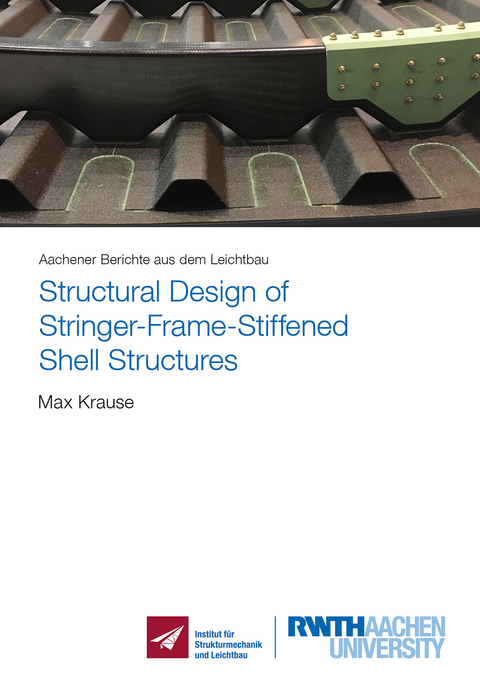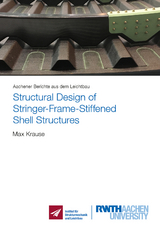Structural Design of Stringer-Frame-Stiffened Shell Structures
Seiten
The structural design of stiffened shells has been subject of research for decades. These are often used in the aerospace sector as a design option for primary structures because of their high load-carrying-capacity-to-mass ratio. The importance of structural lightweight design has increased in the design of such structures, because of the increasing commercialisation of the space sector and the accompanying cost pressures for future space launch vehicles. To increase the maximum payload and achieve the ambitious price targets, an optimal design of the structure in terms of lightweight design is imperative.
Thin-walled stringer frame stiffened shell structures have the highest load-carrying capacity for use as primary structures. The design of these is complex because of the many failure modes to be considered and therefore requires efficient, robust and reliable design methods. Established methods are unsuitable for modern torsionally stiff stringer profiles, as they do not represent the structural behaviour of the shell adequately. This can also be assumed for prospective profile shapes. In the course of this, the established design process with the aim of an optimal lightweight design must also be questioned, as it is based on the description of the structural behaviour.
Within this work a structural model is derived to describe the structural behaviour. From this, a method for calculating the panel instability load and a method for the sizing of frames is developed. Compared to numerical simulations, the developed methods provide similar accuracy with significantly lower time resource requirements. Finally, the developed methods and evaluated research results are used to propose adjustments to the established design process of stringer frame stiffened shells.
Thin-walled stringer frame stiffened shell structures have the highest load-carrying capacity for use as primary structures. The design of these is complex because of the many failure modes to be considered and therefore requires efficient, robust and reliable design methods. Established methods are unsuitable for modern torsionally stiff stringer profiles, as they do not represent the structural behaviour of the shell adequately. This can also be assumed for prospective profile shapes. In the course of this, the established design process with the aim of an optimal lightweight design must also be questioned, as it is based on the description of the structural behaviour.
Within this work a structural model is derived to describe the structural behaviour. From this, a method for calculating the panel instability load and a method for the sizing of frames is developed. Compared to numerical simulations, the developed methods provide similar accuracy with significantly lower time resource requirements. Finally, the developed methods and evaluated research results are used to propose adjustments to the established design process of stringer frame stiffened shells.
| Erscheinungsdatum | 04.07.2023 |
|---|---|
| Reihe/Serie | Aachener Berichte aus dem Leichtbau ; 2023,01 |
| Verlagsort | Düren |
| Sprache | englisch |
| Maße | 148 x 210 mm |
| Gewicht | 228 g |
| Themenwelt | Technik ► Luft- / Raumfahrttechnik |
| Schlagworte | Axial Compression • Minimum Stiffness Criteria • Panel Instability • Stiffened Shells • structural design |
| ISBN-10 | 3-8440-9126-2 / 3844091262 |
| ISBN-13 | 978-3-8440-9126-7 / 9783844091267 |
| Zustand | Neuware |
| Informationen gemäß Produktsicherheitsverordnung (GPSR) | |
| Haben Sie eine Frage zum Produkt? |
Mehr entdecken
aus dem Bereich
aus dem Bereich
Grundlagen, Mathematik, Kartenkunde, leistungsbasierte Navigation
Buch | Softcover (2022)
De Gruyter Oldenbourg (Verlag)
CHF 102,10
Das aktuelle Raumfahrt-Jahrbuch mit allen Starts
Buch | Softcover (2022)
Verein zur Förderung der Raumfahrt e.V. (Verlag)
CHF 26,45




